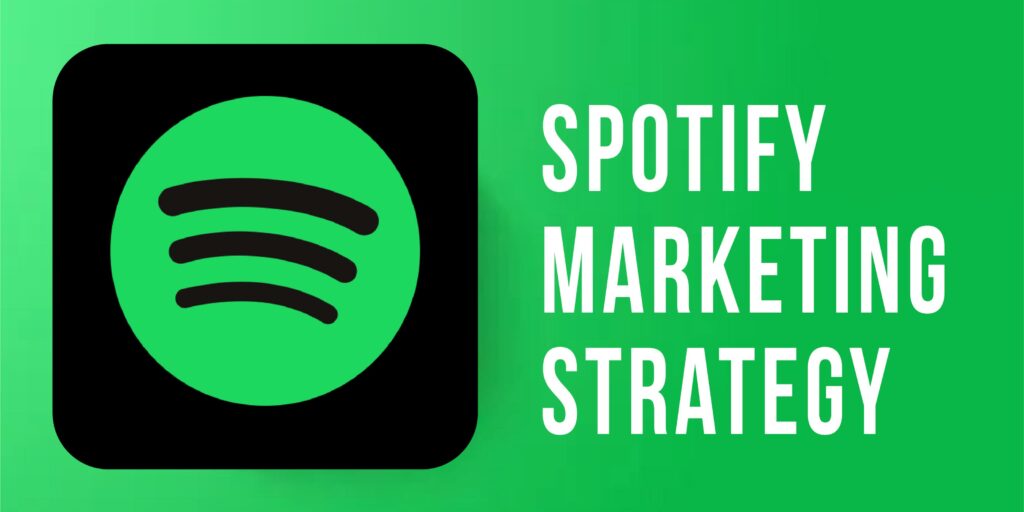
Cracking The Code: Case Study On Spotify Marketing Strategy
Spotify is a music streaming service that was launched in 2008 and has since become one of the leading players in the industry.
Spotify’s rise to success has been quite phenomenal, as it has become one of the most powerful streaming music platforms for millennials. In addition to boasting over 299 million subscribers in more than 100 markets, Spotify also provides a streaming music service through which users can listen to their favourite musicians as well as top musicians can create playlists, promote their music and connect with their fans.
As a company founded in 2006 by Daniel Ek with the simple concept of combating music piracy and ensuring that artists are compensated fairly, Spotify has helped artists receive fair compensation for their works. As a result of its simplicity and marketing strategy, it has attracted most top emerging singers and composers as well as local artists.
In the captivating blog we will reveal the spotify marketing strategy case study which includes spotify marketing strategy analysis and will discuss the spotify business model! Continue reading!
WHAT ARE THE THREE ASPECTS OF SUCCESSFUL SPOTIFY MARKETING STRATEGY ?
As a roundabout, the company’s marketing strategy is centered on three main aspects: user acquisition, user engagement, and revenue generation.
USER ACQUISITION:
First and most important aspect of spotify marketing strategy is user acquisition. Spotify uses a variety of tactics to acquire new users, including social media advertising, partnerships with other companies, and offering free trials of its premium service. One of the key ways Spotify has been able to acquire new users is through its partnerships with other companies. For example, Spotify has partnered with companies like Samsung, Uber, and Google to offer their users access to the Spotify service. Additionally, Spotify has also used social media platforms like Facebook and Instagram to promote its service and acquire new users.
USER ENGAGEMENT:
User engagement is another aspect of the marketing strategy of spotify. In an effort to engage its existing users, Spotify offers customised playlists and recommendations based on their listening history and preferences. Additionally, the company regularly updates its mobile app with new features and improvements to keep users interested. Also, Spotify offers a number of features to help users discover new music, such as the “Discover Weekly” and “Release Radar” playlists, which are personalised based on listening history.
REVENUE GENERATION:
Last but not the least, revenue generation is another significant aspect of Spotify marketing strategy! Spotify generates revenue through its premium service, which offers ad-free listening as well as offline listening. As well as its in-app purchases and subscriptions, the company generates revenue through partnerships with brands and artists. In addition to selling ads to brands, Spotify is also offering targeted ads to specific groups of users, which is a new way for the company to monetize its platform.
Through its premium service and partnerships, Spotify aims to acquire new users, engage its existing user base, and generate revenue. The Spotify app also offers a wide range of features such as personalized playlists, radio stations, and friends’ playlists, which enable it to differentiate itself from other streaming services.
What Is Spotify Digital Marketing Strategy?
Spotify digital marketing strategy focuses on leveraging data-driven insights, personalised recommendations, and engaging content to create a seamless user experience. They employ targeted advertising campaigns, social media engagement, influencer partnerships, and user-generated content to connect with their audience.
Furthermore, Spotify utilises data analytics to understand user preferences and behaviour, enabling them to deliver relevant ads and curated playlists. Spotify marketing strategy emphasises building brand loyalty, expanding user base, and enhancing the overall music streaming experience through innovative marketing tactics.
What Are Spotify Marketing Strategy For Social Media
As a part of marketing strategy Spotify uses social media platforms to reach a wider audience. Check at a glance the spotify social media marketing strategy!
- Creating engaging content to connect with fans and potential listeners
- Collaborating with influencers and creators to expand reach and visibility
- Utilising targeted ads to reach specific demographics and music enthusiasts
- Encouraging user-generated content and sharing playlists to foster community engagement
- Analysing data and insights to optimise marketing efforts and track spotify marketing campaigns success.
Spotify Marketing Strategy In India
Spotify’s expansion into the Indian market presented unique challenges and opportunities. The company recognized the immense potential of India’s music-loving population and devised a tailored marketing strategy to capture this market. By offering competitive pricing, localising content, and partnering with popular Indian artists and influencers, Spotify effectively positioned itself as a strong competitor in the Indian music streaming industry.
What Are Some Notable Spotify Marketing Campaigns?
As a part of Spotify marketing strategy it has executed numerous impactful marketing campaigns that have resonated with its target audience and helped propel its growth. Let’s examine some notable examples:
Discover Weekly: The Power of Personalization
The launch of Spotify’s Discover Weekly playlist was a game-changer for the platform. By utilising machine learning algorithms to curate personalised playlists for individual users, Spotify tapped into the desire for customised experiences and kept users engaged by delivering fresh music tailored to their tastes.
Wrapped: Engaging Users through Yearly Summaries
Wrapped, an annual personalised summary of a user’s listening habits, has become a highly anticipated event for Spotify users. By gamifying the experience and encouraging users to share their Wrapped statistics on social media, Spotify effectively generated buzz and promoted user engagement, further solidifying its brand presence.
Collaborations with Artists: Building Brand Affinity
Spotify has strategically collaborated with artists to create exclusive content and campaigns. Notable examples include the partnership with Billie Eilish for the release of her debut album, “WHEN WE ALL FALL ASLEEP, WHERE DO WE GO?” This collaboration allowed Spotify to leverage the artist’s massive fan base and generate excitement around the album release, showcasing its marketing prowess.
What Is The Underlying Business Model Of Spotify?
When we are discussing the Spotify business model, it is essential to understand the key elements that drive the company’s success. Spotify operates on a freemium model, offering free access to music supported by ads, while also providing a premium subscription option that removes ads and unlocks additional features. The platform generates revenue through advertising, premium subscriptions, and partnerships with record labels and artists. Furthermore, Spotify utilises sophisticated data analytics and recommendation algorithms to personalise the user experience and promote music discovery. By diversifying into the podcast industry, Spotify business strategy expands its offerings and attracts a broader user base. Through these strategic initiatives, Spotify has established itself as a leading player in the music streaming industry, continually adapting its business model to meet the evolving demands of users and content creators.
Summing Up!
Overall, Spotify marketing strategy has been highly effective in helping the company acquire new users, engage its existing user base, and generate revenue through its premium service and partnerships. Additionally, the company’s focus on personalization, data, and analytics has helped Spotify to stand out from the competition and become one of the leading players in the music streaming industry.



